This thesis, advised by Sara Zewde, explores the potential for the landscape architect to flip the script on designing with remnant landscapes from the mid-20th century era of urban renewal, focusing on West Baltimore’s Highway to Nowhere.

The form and materiality of the sunken highway have become ingrained in the cultural landscape; there is an opportunity to design a new landscape typology from this existing infrastructure, without modifying its form or material. Through resurfacing historic residential and commercial fabric and making the site ecologically productive for surrounding context, the Highway to Nowhere is recast as the Highway to The Bottom.

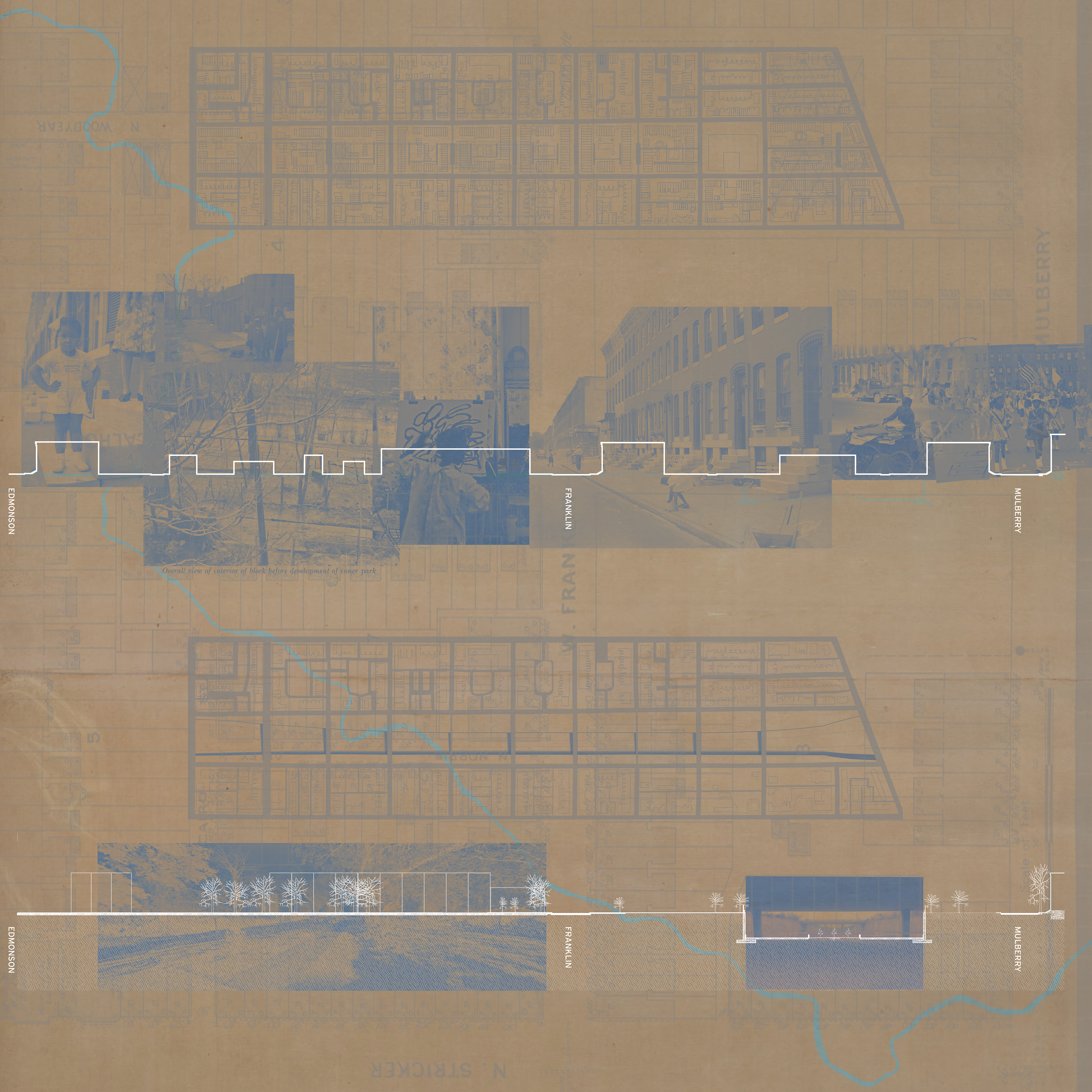
The Highway to The Bottom operates in opposition to the structures undergirding it: annexation/blotting, demolition, and greenwashing. This thesis recasts these obstructions as productive design frameworks in the form of ownership, material, and experience, all as expressions of the hole in the ground in West Baltimore.
The word “cast” in my title is particularly important as it contains the multitude of actions integral to the work:
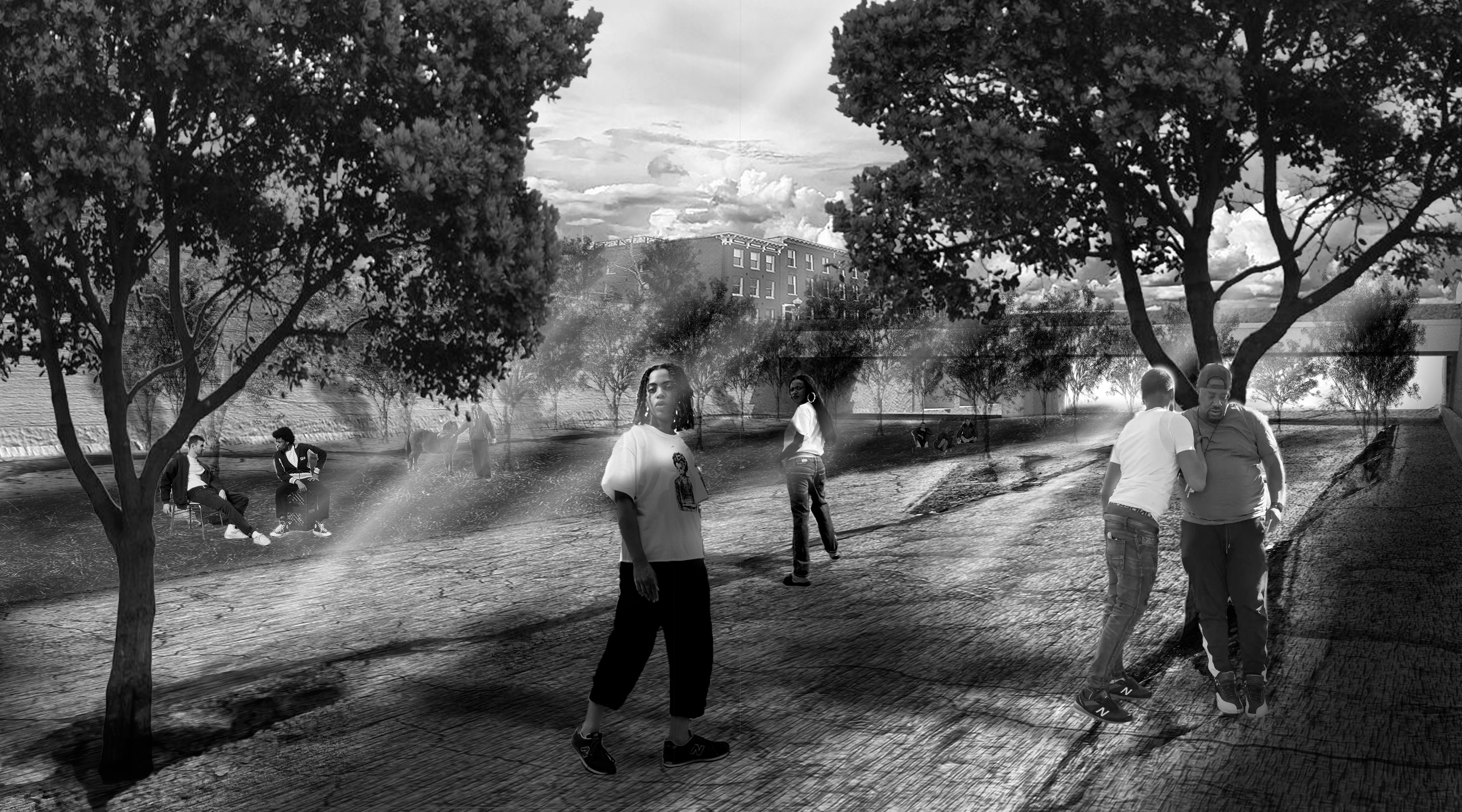
To dispose or arrange into parts or into a suitable form or order: The Highway to The Bottom operates in opposition to the structures undergirding it: demolition and displacement, annexation/blotting of vacant land, and greenwashing. This thesis re-casts these obstructions as productive design frameworks in the form of ownership, experience, and material, all as expressions of this hole in the ground. The design challenge I gave myself for this thesis was using only the materials on site, shifting them spatially or typologically to re-cast meaning and memory. A main aspect of this is the re-organization of the 477 existing trees in the median strip. Space is formed and reframed by moving trees.
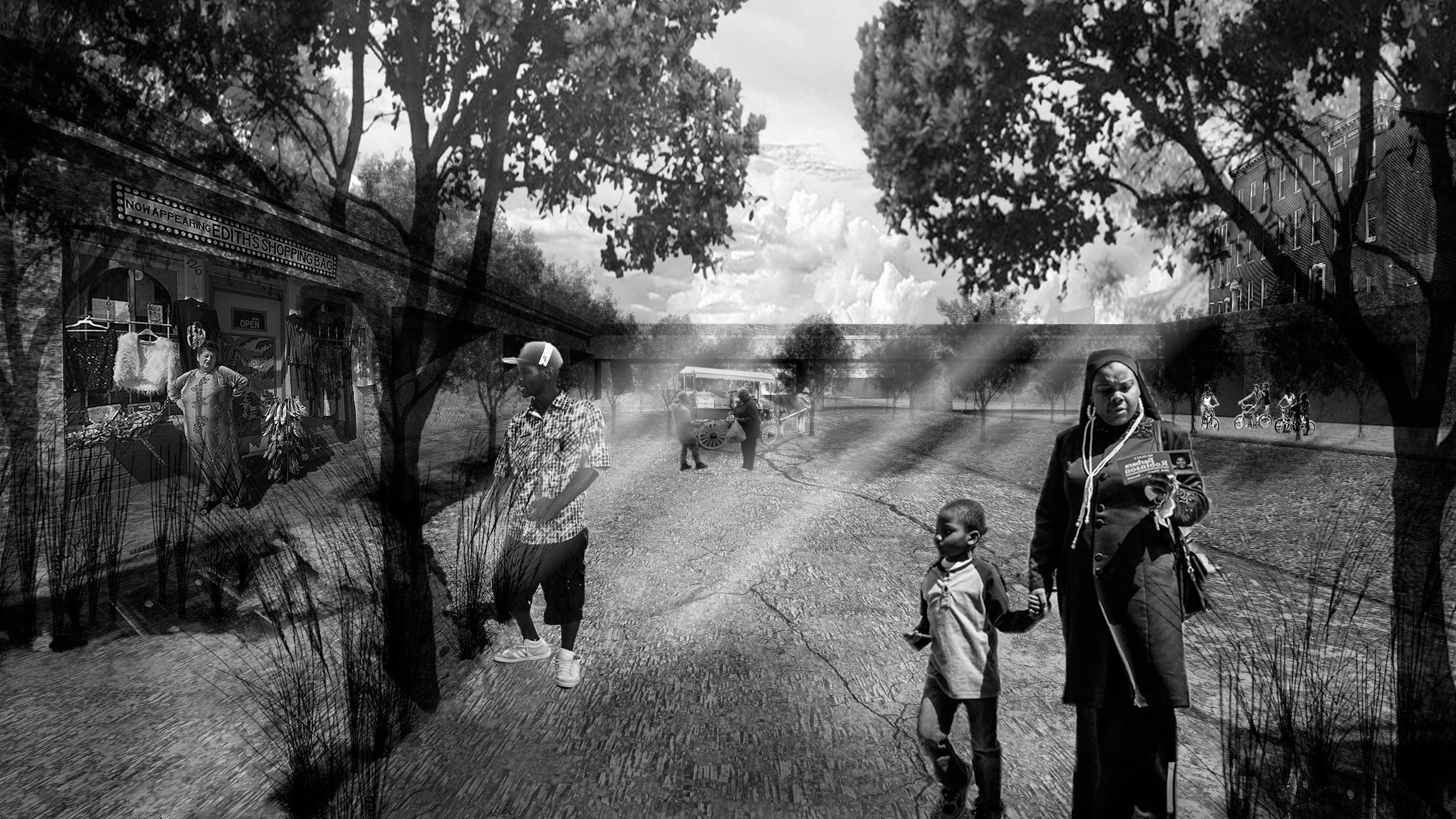
To shed or molt: The highway sheds its previous typology through design. My thesis takes two historic acts of design extant on site, one infrastructural and one landscape, and forms a new typology of urban landscape, retaining material memory, and shifting the purpose of the highway from linear vehicular traffic to a more horizontal space of lingering, rooting, and repair. I propose to crack the highway for a few reasons. A crack in pavement can represent disrepair, but it can also represent growth and opportunity for life. Cracking the pavement will invite life into the dead dirt below, encouraging its growth over time into living soil.
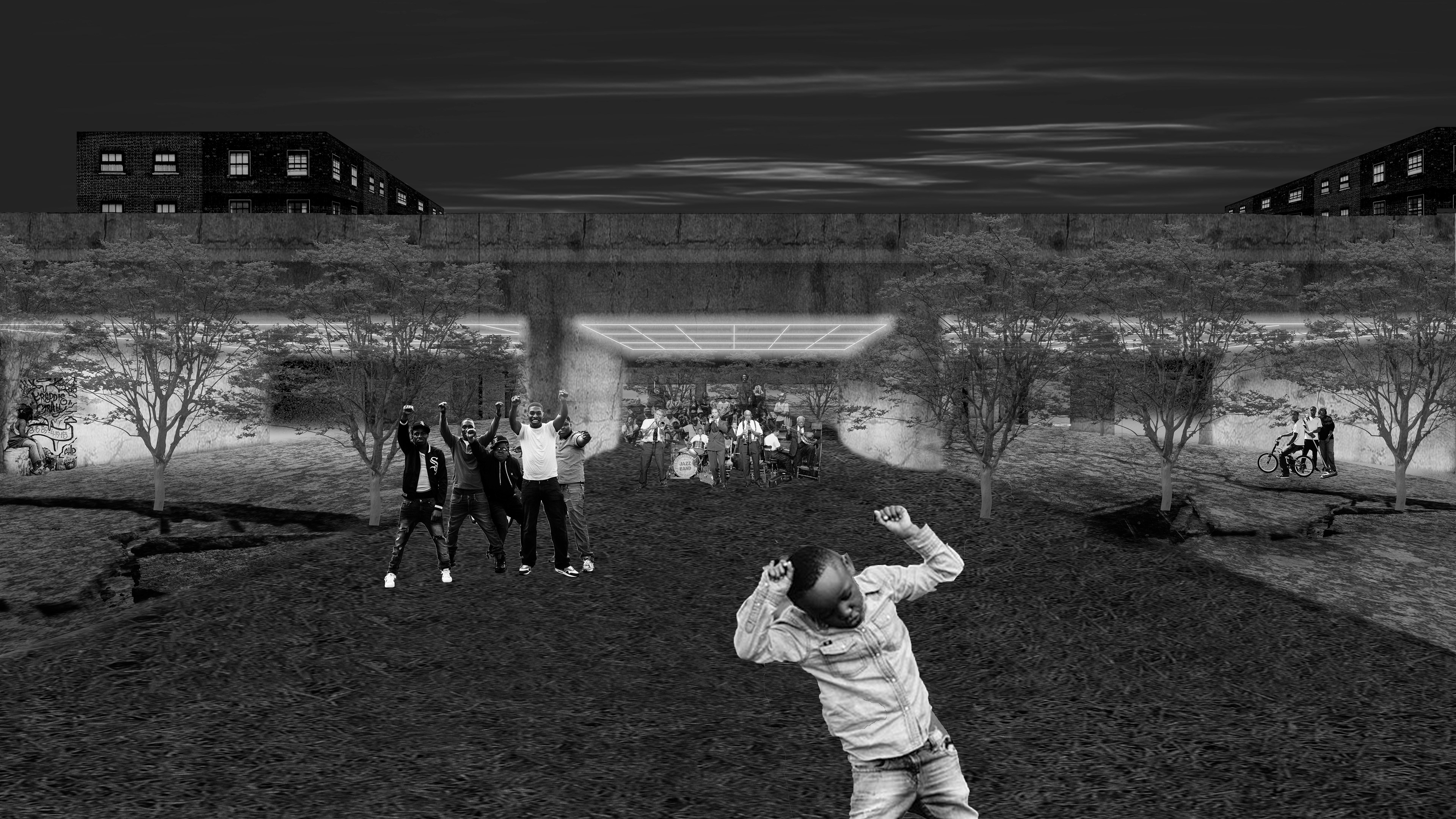
To direct a light or shadow: The form of the site is so intertwined with light and shadow because of its shape and orientation of north and south facing walls. Recent projects like the Congress for New Urbanism’s Highways to Boulevards initiative focus on filling highways like the Highway to Nowhere. My thesis categorizes fill as not only an immense undertaking of labor and energy, but also as a form of erasure. The physical form of the site provides a landscape too interesting to ignore. A particularly interesting moment is the space underneath overpass bridges, which were once the streets where residents gathered. One part of rearranging trees is the establishment of a street tree allee that frames space underneath the bridge, symbolic of the street and stoop as a gathering space. A nine patch quilt pattern in neon casts light underneath at night, which subverts the expected light and shadow of a space under a bridge.

To give a shape to by pouring into a mold and letting harden without pressure: West Baltimore is given a new shape by pouring the city into the space. In opposition to vaguely transferring land, ownership is employed as a strategy to recast the highway as a neighborhood asset. This includes businesses below grade within the hole, tucked into the retaining wall, and residences above ground in an act of repatriation to displaced residents. Occupation of the highway in this way completely subverts its original meaning. This vast amount of space, 33 acres, is an asset of land that belongs to West Baltimore. By casting ownership into The Bottom, there is not only a new landscape typology brought to form, but also an opportunity to restore justice.


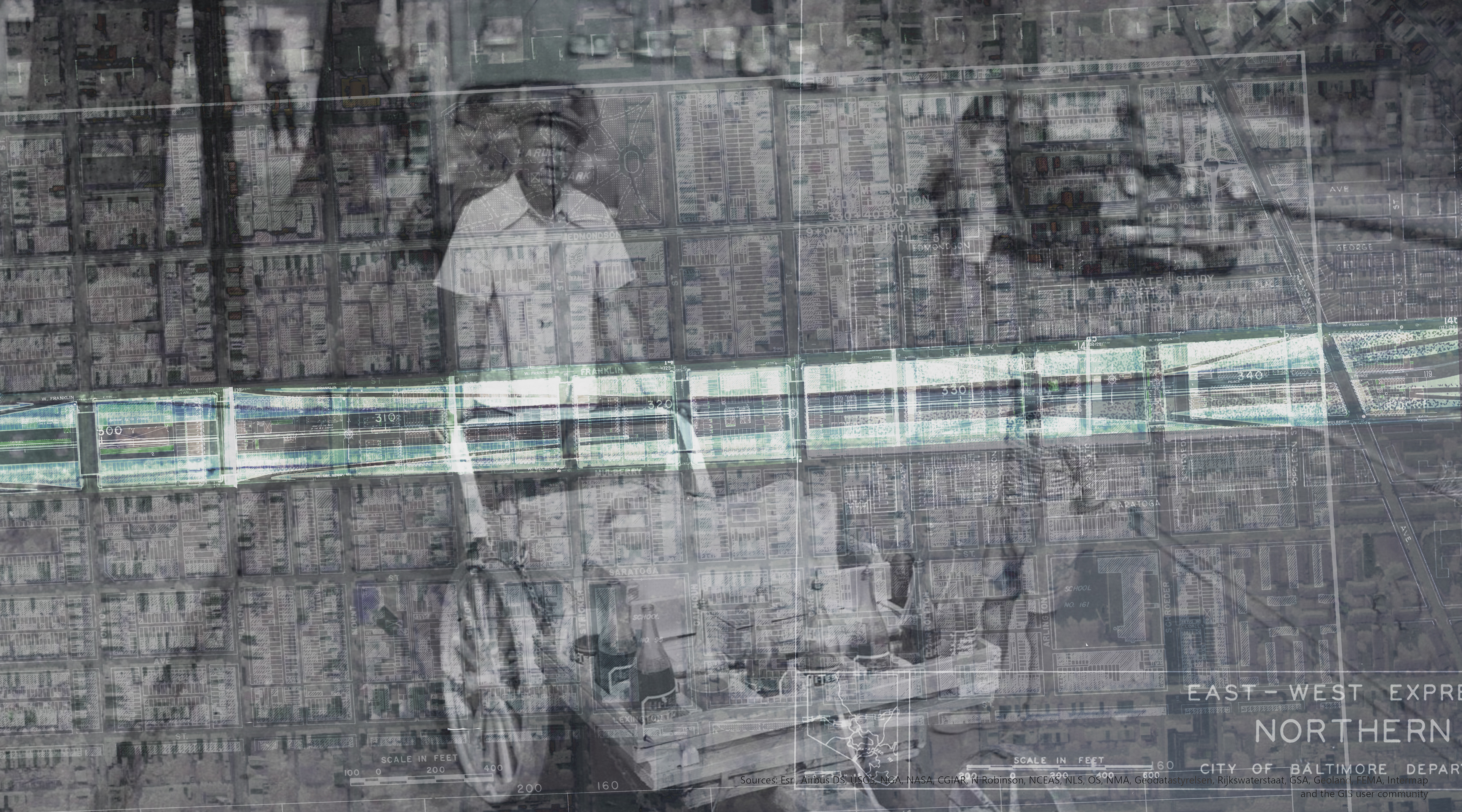
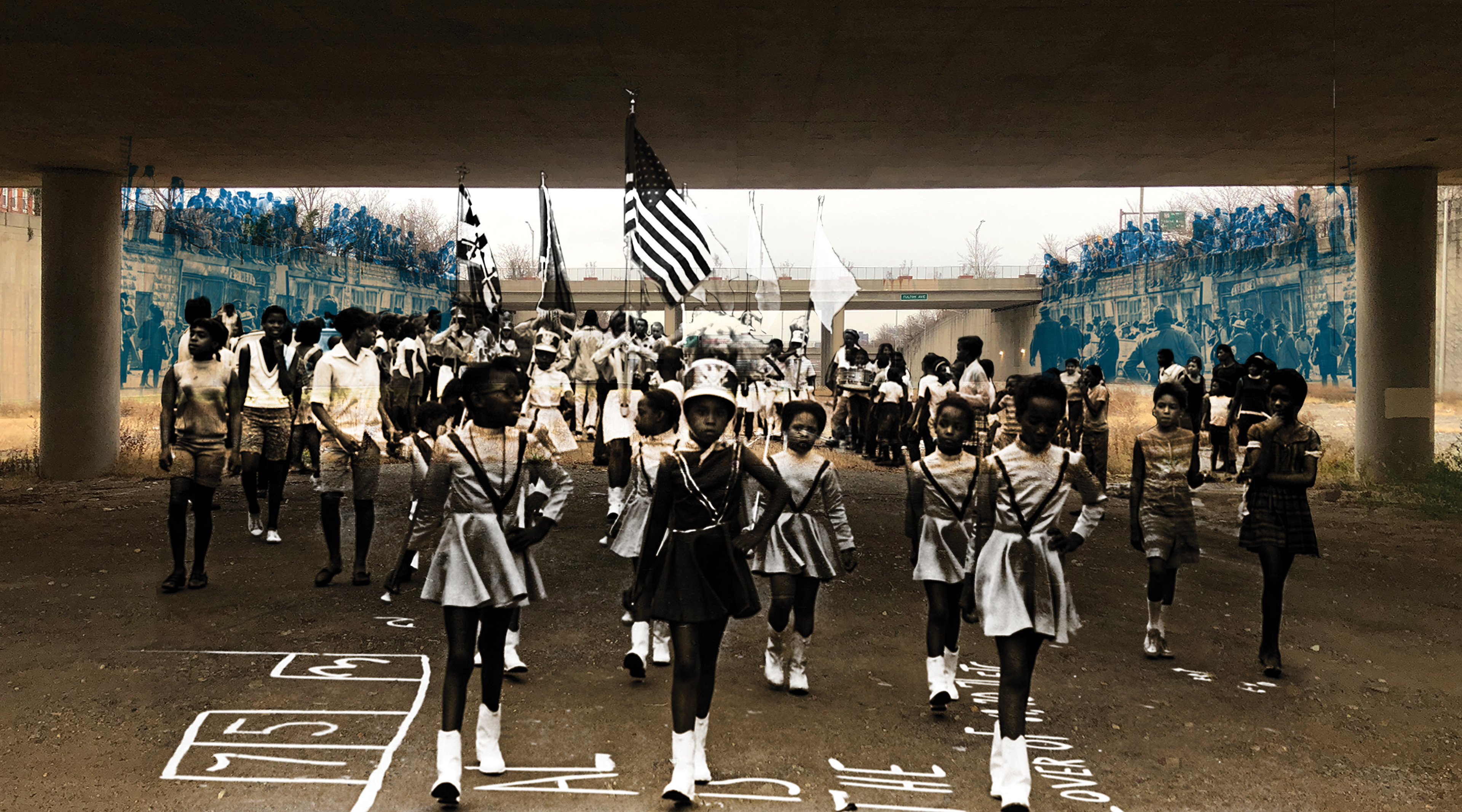
The Highway to The Bottom is a hole in the ground. It is a place of light and shadow, of re-framing, of repatriation, of recasting. I call for a move towards this new form of landscape that emerges from owning a history of erasure by design. This thesis is not a memorial, but a proposition on landscape’s potential to cast urban form as a reflection of spatial and cultural memory.
“These black American urban landscapes —the Bottoms— are neighborhoods first, with many wonderful neighborhood things.”
— Ujiji Davis

